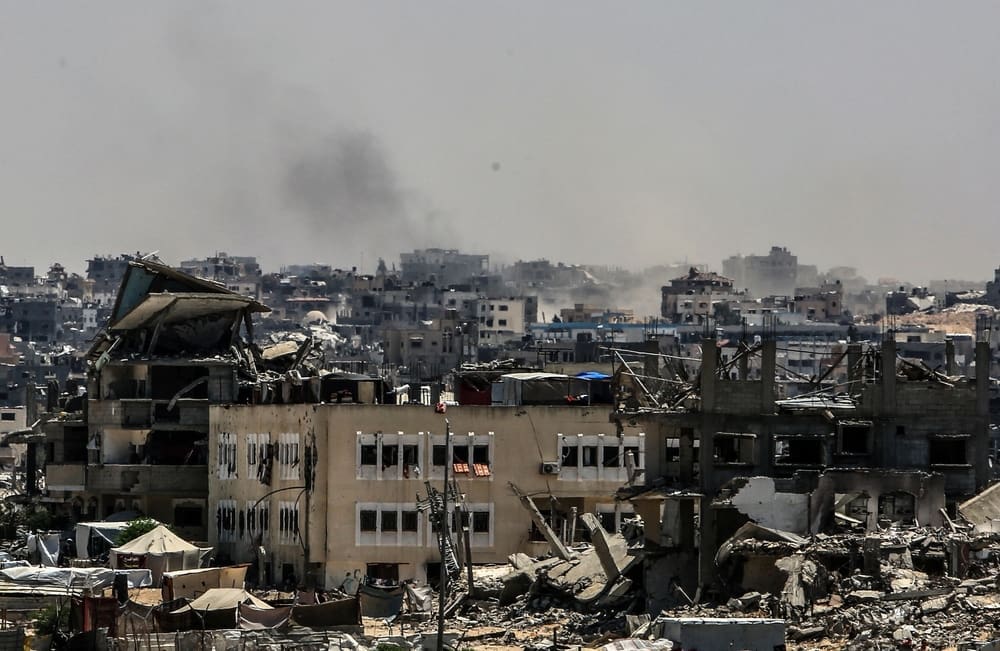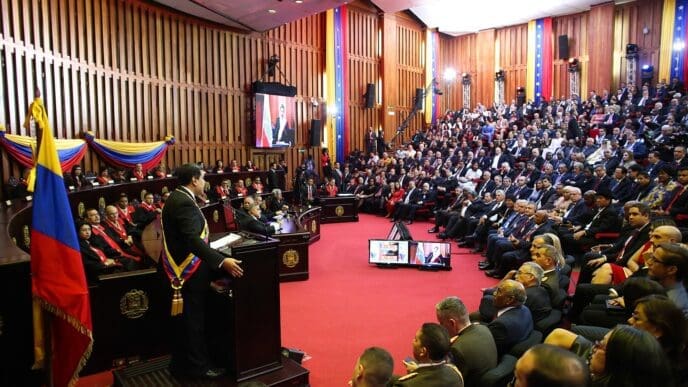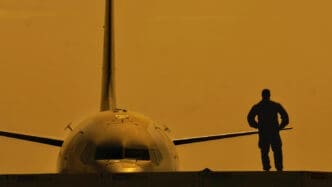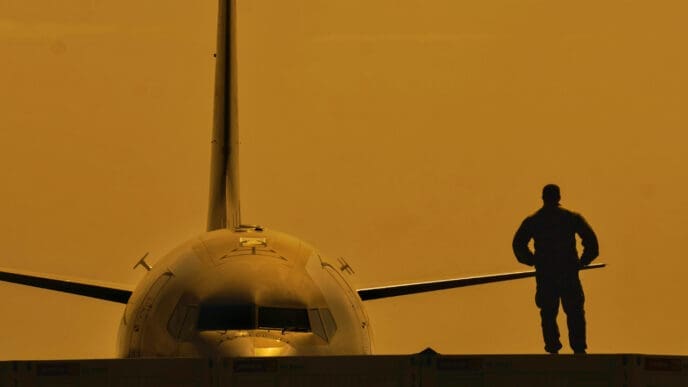Executive Summary
- A double Israeli strike on Nasser hospital in Khan Younis, Gaza, killed 20 people, including five journalists and health workers, with the second strike occurring minutes after the first as rescuers gathered.
- Israeli Prime Minister Benjamin Netanyahu described the incident as a “tragic mishap” and promised an investigation, while international leaders, including Donald Trump, and media freedom groups widely condemned the strikes, accusing Israel of intentionally targeting journalists.
- The incident intensifies international scrutiny and condemnation regarding the protection of journalists and healthcare workers in conflict zones, highlighting the severe dangers faced and fueling calls for a ceasefire and adherence to international humanitarian law.
The Story So Far
- The double Israeli strike on Nasser hospital occurs amidst a conflict where over 190 journalists, predominantly Palestinians, have been killed, a situation compounded by Israel’s restrictions on international news organizations that make local reporting critical. This incident follows a pattern of accusations by media organizations that the Israeli military intentionally targets journalists, with the “double-tap” nature of the attack, a tactic designed to maximize casualties among responders, intensifying international scrutiny and condemnation regarding adherence to international humanitarian law and the protection of journalists and healthcare workers.
Why This Matters
- The double Israeli strike on Nasser hospital, resulting in the deaths of journalists and health workers, significantly amplifies international condemnation and scrutiny of Israel’s military conduct, highlighting the extreme dangers faced by those providing aid and reporting from Gaza, and intensifying global demands for a ceasefire and adherence to international humanitarian law.
Who Thinks What?
- The Hamas-run health ministry, World Health Organization, and employers of the deceased reported that a double Israeli strike on Nasser hospital resulted in 20 deaths, including five journalists and health workers, with international bodies like the UN, UK, France, and Germany, alongside media freedom groups, condemning the “horrific killings” and calling for investigations, protection of civilians and journalists, and adherence to international law, with some accusing Israel of intentionally targeting journalists.
- The Israel Defense Forces (IDF) confirmed a strike in the vicinity of Nasser Hospital, while Prime Minister Benjamin Netanyahu described the incident as a “tragic mishap” that Israel “deeply regrets,” stating that military authorities were conducting a “thorough investigation.”
A double Israeli strike on Nasser hospital in Khan Younis, Gaza, resulted in the deaths of 20 people, including five journalists and health workers, according to reports from their employers, the World Health Organization, and the Hamas-run health ministry. The incident occurred on Monday, with an initial strike around 10:00 local time, followed by a second attack minutes later as rescuers and journalists gathered at the scene.
Details of the Strikes and Casualties
The first strike hit the hospital at approximately 10:00 local time. A British medical professional working in the intensive care unit described “mass panic… chaos” following the initial blast. Around 10 minutes later, a second explosion occurred at the same location, striking medical staff and journalists who had responded to the scene.
The World Health Organization reported that the hospital’s emergency department, inpatient ward, surgical unit, and emergency staircase were damaged. Footage reviewed by BBC Verify and live streams from Al Ghad TV reportedly confirm these timings and show emergency workers and journalists being directly hit by the second strike, with bodies visible in the aftermath.
While the identities of the five journalists killed have been confirmed, specific details about the other fatalities, which included rescuers and patients, remain limited. The Hamas-run health ministry indicated these individuals were also among the deceased.
Journalists Identified Among the Dead
The confirmed journalists include Husam al-Masri, a cameraman for Reuters, who was reportedly killed in the first strike while operating a live TV feed. Mariam Dagga, 33, a freelance journalist working with The Associated Press, regularly reported from the hospital and leaves behind a son.
Mohammad Salama, who worked for Al Jazeera and Middle East Eye, was reportedly planning his wedding. Ahmed Abu Aziz, another freelance journalist for Middle East Eye, was based in Khan Younis. Moaz Abu Taha, who contributed to various outlets including the Israeli newspaper Haaretz, had recently filmed conditions at Nasser Hospital.
The reliance on local reporters in Gaza is critical, as Israel restricts international news organizations from reporting freely within the territory. The Committee to Protect Journalists (CPJ) notes that over 190 journalists have been killed in 22 months of conflict, with the vast majority being Palestinians killed in Israeli attacks. This incident follows a previous attack two weeks prior, where six journalists were killed near Shifa Hospital.
Israeli Response and International Condemnation
The Israel Defense Forces (IDF) initially confirmed a strike in the vicinity of Nasser Hospital. Israeli Prime Minister Benjamin Netanyahu later described the incident as a “tragic mishap” that Israel “deeply regrets,” stating that military authorities were conducting a “thorough investigation.” However, the statement did not directly address the “double-tap” nature of the attack, a controversial military tactic designed to maximize casualties by targeting responders to an initial strike.
Media organizations, including the Foreign Press Association in Israel and the Occupied Palestinian Territories, have accused the Israeli military of a pattern of intentionally targeting journalists throughout the conflict. The timeline for the publication of Israel’s internal inquiry results remains unclear.
The international community has widely condemned the strikes. UN Secretary General António Guterres denounced the “horrific killings” and called for a “prompt, and impartial investigation,” highlighting the extreme risks faced by medical personnel and journalists. UK Foreign Secretary David Lammy expressed being “horrified” and urged an immediate ceasefire.
French President Emmanuel Macron called the strikes “intolerable,” emphasizing the need to protect civilians and journalists, and reiterated calls for humanitarian aid access and respect for international law. Germany’s foreign office conveyed its shock. President Donald Trump, when asked for his reaction, stated he was “not happy about it.”
Media freedom groups also voiced strong condemnation. Thibaut Bruttin of Reporters without Borders questioned the disregard for international law and protections for journalists in conflict zones. The CPJ asserted that “Israel’s broadcasted killing of journalists in Gaza continues while the world watches and fails to act firmly,” while the Foreign Press Association urged international leaders to act, calling for an end to what it termed Israel’s “abhorrent practice of targeting journalists.”
The deadly double strike on Nasser hospital has intensified international scrutiny and condemnation regarding the protection of journalists and healthcare workers in conflict zones. As investigations are underway and calls for accountability mount, the incident underscores the severe dangers faced by those reporting from and providing aid within Gaza, further fueling demands for a ceasefire and adherence to international humanitarian law.














